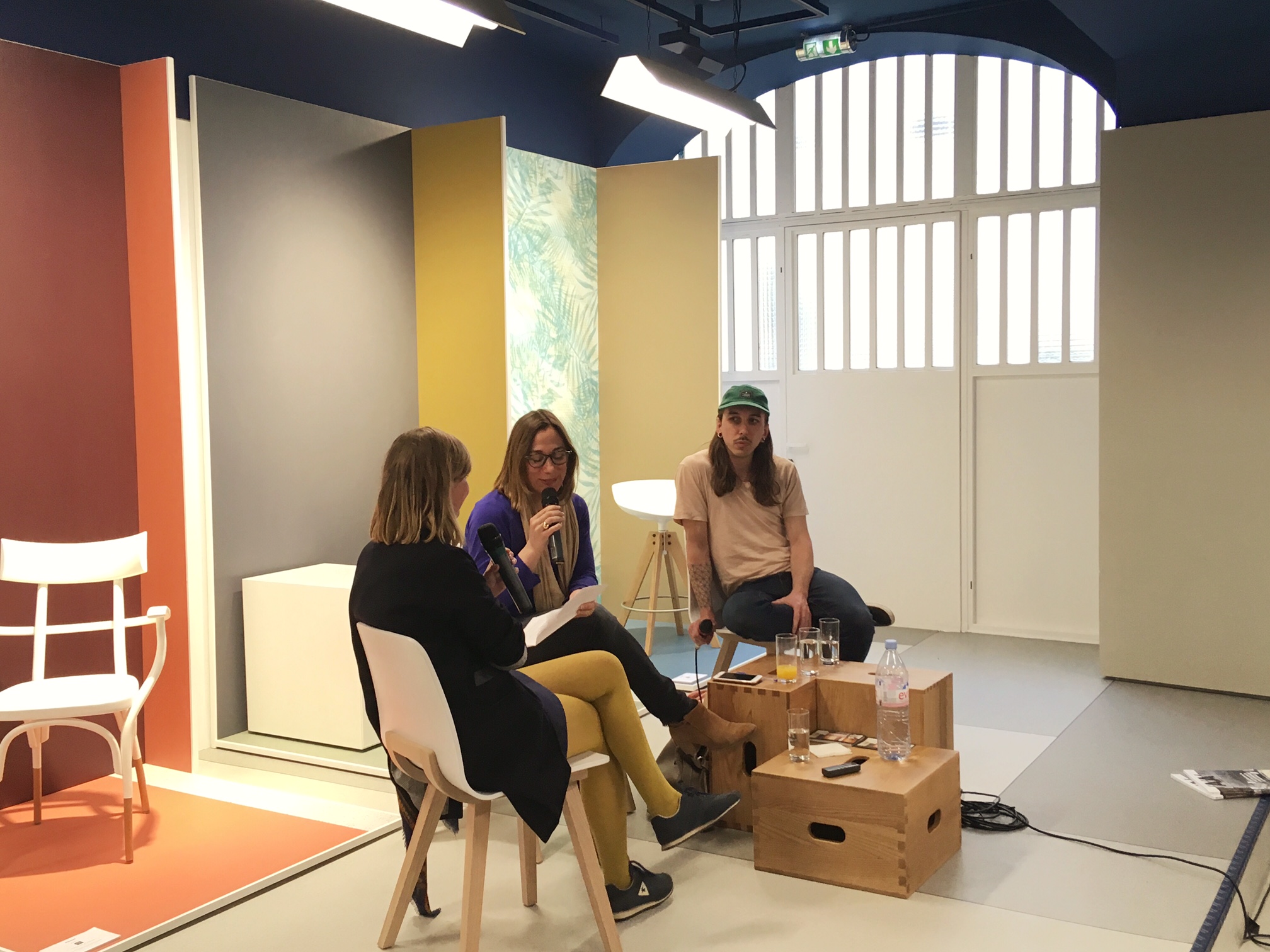Resurrecting unrealised plans
On the 3rd of July this year, AA organised a new conversation at the Atelier Tarkett in Paris, the third in the “Creative Affinities” series, with artist Alain Bublex and architect Nicolas Laisné. Selected extracts.
Emmanuelle Borne: Alain Bublex, architects are familiar mostly with your Plug-In City’collages, which are directly inspired by the Archigram projects. But you’ve also made other series in which the city is omnipresent. Why this preference for architecture and urban landscapes?
Alain Bublex: I’ve never really thought about this. I was born in a city, so this is a natural environment for me. What I find really intriguing about cities is that they’re never finished. You always get the feeling that something needs completing, that the city is defined by its buildings as much as by projects that never made it. You’re walking around in something that exists as well as in something that might have been. It’s the poetry of an inner city street, of these tall brick buildings, isolated among much smaller ones. You really get the impression that they’re waiting for their street and are surprised that it hasn’t arrived yet. This sense of wonder has always appealed to me.
EB: Your work oscillates between fiction and reality, and you speak of the future as the future perfect (like the grammatical tense). What do you mean by this? Nicolas Laisné, what do you see in Alain Bublex’s work?
AB: Instead of seeking to build new things, why not revisit things that came to naught? In talking about these unsuccessful projects with the philosopher Elie During, I realised that this is what the future is. The future isn’t the present in reserve; it isn’t what’s going to happen. It’s all these things projected above us, that never came to fruition, and that therefore continue to exist. So work is about resurrecting these unrealised plans. When Le Corbusier came up with the “Plan Voisin” for Paris, the plan wasn’t realised: it falls within the realm of the “possible”. When I work on the Plan Voisin, the idea consists in starting it off again, maintaining it in the future tense and ensuring that it doesn’t fail to materialise, ensuring it keeps on rising.
Nicolas Laisné: I’m not keen on the idea of utopia; I distrust pre-designed cities. I’ve observed that, today, the concept of creating a town involves a number of players, and also a element of chance. This is what I see in Alain Bublex’s work. For him, utopias are sources of inspiration, just like real cities. I enjoy spaces that aren’t overly defined and processes that allow chance to alter them. The cities I favour, the ones that seem the most pleasant to me, are those that were built with numerous constraints; and I hold the opposite view that cities like Brasilia, which were designed all at once, are not nice to live in. Architects had too much say in the planning of cities, but, increasingly, they are not so much centre-stage, and this to me is a good thing. In meetings, nowadays, there are fifteen different players, including urban planners and landscape designers. Architects, nevertheless, have an essential role in bringing together these various areas of expertise.
EB: Alain Bublex, what would you say about Chandigarh or Brasilia, and do you share Nicolas Laisné’s view of these cities born of a demiurgic action?
AB: Yes, I have the impression that the idea of total control in a plan always fails. Even Paris, where accidental architecture is everywhere, succeeds in escaping Haussmann, which goes to show. But I’m not affected by it in the way Nicolas is because my issue is not to make the city. What I’m interested in is to walk through the city, it’s a lot impler. And I always make out the plan behind what’s there. To me, the plan always seems benevolent, even when it fails.
EB: What about the city entrances that are so disapproved of today, these commercial areas composed of shoe boxes, and floral roundabouts? Nicolas Laisné, I doubt such spaces appeal to you…
NL: Which city entrances are we talking about? For sure, Las Vegas as seen by Venturi and Scott Brown is very poetic. You can find poetry everywhere, even when pretty significant urban planning errors were made. As for city entrances, I do think they could be more bucolic. Landscape designers aren’t given enough influence in the design of cities. In architecture, the notion of authorship has completely changed: few are the projects on which architects work on their own. There are now three or four offices putting their heads together, which results in projects that are, in my view, a lot richer and more adaptable.
Find the full Nr 426, dedicated to commitments in architecture, on our online store.



